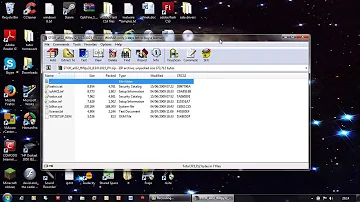How to add SATA drivers to a Windows XP installation disc?
To install Windows XP with native SATA driver, perform the following steps:Boot the notebook PC.Insert the Windows XP installation CD into the optical CD/DVD drive.Press the F6 key when prompted. … Press the S key to specify the additional device. … Insert the SATA driver disk into drive A. … Follow the on-screen prompts.
How do I get SATA drivers for Windows XP?
Download the SATA driver of your motherboard
To download the SATA driver, go to the website of the manufacturer of your motherboard. Select Windows XP 32-bit (or 64-bit Windows XP if this is the case. But this version is very rare) as the operating system and download the driver "SATA", "HDD" or Hard Drive.

How to install SATA drivers?
4. Install or update drivers for Standard SATA AHCI Controller
- Press and hold the Windows key on your keyboard, then press R. …
- Type in “devmgmt. …
- Expand the “IDE ATA/ATAPI controllers” category. …
- Right-click on each of the listed items in this category, then select “Update driver.”
How do I download drivers for Windows XP?
Updating drivers in Windows XP
From the Hardware tab, click Device Manager. To update all drivers, select your computer's name. Then, from the Action menu, choose Scan for Hardware Changes. This should install any missing drivers.
How to install Windows XP on a SATA drive without a floppy?
create a bootable USB flash drive by using the ISO image and a program called NLite. boot your Windows from the bootable USB flash drive; floppy not required anymore.
…
Requirements:
- an original Windows XP CDROM (or its ISO image)
- an 8GB USB flash drive.
- a PC capable to boot from an USB drive.
- an working Windows instance.
How to install Windows XP with AHCI enabled?
Enabling AHCI on existing Windows XP installation . Download Intel Sata RAID/AHCI storage driver floppy (used during Windows setup with F6) from your motherboard manufacturer and extract files to a directory on your HD. Reboot. Enter system bios and change controller to AHCI and save.
Do I need to install SATA drivers?
You don't need to install a driver if you are using an IDE SSD. However, if it is a SATA SSD, then depending on your system requirements, a driver may be needed.
Why won’t my SATA drive not detected?
The BIOS will not detect a hard disk if the data cable is damaged or the connection is incorrect. Serial ATA cables, in particular, can sometimes fall out of their connection. Be sure to check your SATA cables are tightly connected to the SATA port connection.
Why is my SATA drive not showing up?
If your internal hard drive is not showing up, it might be because it is not initialized or it needs formatting. Ensure your disk is properly connected to the motherboard with the SATA cable. Due to some BIOS settings, your HDD might also not be visible in Windows 10.
Why is my SATA drive not detected?
The BIOS will not detect a hard disk if the data cable is damaged or the connection is incorrect. Serial ATA cables, in particular, can sometimes fall out of their connection. Be sure to check your SATA cables are tightly connected to the SATA port connection.
How do I manually install missing drivers?
In the search box on the taskbar, enter device manager, then select Device Manager. Right-click (or press and hold) the name of the device, and then select Uninstall. Restart your PC. Windows will attempt to reinstall the driver.
Can you manually install drivers?
Manually Install Device Drivers on Windows
Open the Start menu and search for device manager. Select the top result. When Device Manager opens, expand the branch for the device you want to install. Right-click the device and select Update driver from the menu.
How do I install SATA SSD in old computer?
Remove your old drive and disconnect any cables and brackets attached to it. Don't force the connection – it should plug in easily and fit snugly. To install the SSD as a secondary drive (not your primary or boot drive), use a SATA cable and attach one end of the cable to the SATA connector on your motherboard.
How do I force Windows XP to boot from USB?
While booting (before Windows starts loading), get into the BIOS configuration screen by hitting something like F1, F2, Delete or Escape. Hotkey instructions are generally provided on the screen. Go to the section that contains your boot devices. With your USB drive plugged in, the USB drive should be listed.
Does Windows XP support AHCI mode?
If you have SATA disk attached to disk controller in AHCI mode, you need special driver from motherboard vendor in order to make it work in Windows XP. If you are using ATA disk or your SATA contoller is in ATA-compatible mode, then you don't need any special driver — Windows XP already includes one.
Is SATA and AHCI the same?
The Advanced Host Controller Interface or commonly known as AHCI is a new programming standard that defines a new mode of operation for SATA that adds two extra features; NCQ and hot-plugging.
What is a SATA driver?
Serial Advanced Technology Attachment, also known as Serial ATA or SATA, enables mass storage devices, such as hard drives and optical drives, to communicate with the motherboard using a high-speed serial cable over two pairs of conductors.
How many cables do you need to install a SATA hard drive?
Any SATA hard drive has two L-shaped ports: the smaller one is for data connection, while the wider one is for power. Thus, you need two cables per each SATA drive: A SATA data cable is flat, typically red-colored, with small identical 7-pin connectors on each end that have recognizable L-shaped notches.
How do I enable SATA hard drive in BIOS?
The user will need to check the "SATA Configuration" type in BIOS Setup Utility as shown below:
- Boot the system.
- Press F1 to enter into the BIOS Setup Utility.
- Choose the menu "Advanced -> SATA Configuration".
- Set "SATA#1 Configuration" to be "Enhanced".
How do I enable SATA hard drive?
Restart PC and press F2 to enter BIOS; Enter Setup and check system documentation to see whether the not detected hard drive is turned Off in System Setup or not; If it's Off, turn it ON in System Setup. Reboot PC to check out and find your hard drive now.
How do I force Windows to install drivers?
In the search box on the taskbar, enter device manager, then select Device Manager. Select a category to see names of devices, then right-click (or press and hold) the one you'd like to update. Select Search automatically for updated driver software. Select Update Driver.
What are the four ways to install a device driver?
Admins can install device drivers on a server in four ways.
- Running the Setup. …
- Starting the computer. …
- Scanning for new hardware.Add/Remove Hardware Wizard can be used to perform the hardware-detection process and desired device driver installation.
- Manual installation.
Can SSD be installed in old PC?
Does your computer use a regular off-the-shelf Serial ATA (SATA) HDD? If so, you can upgrade it with an SSD. SSDs are compatible with both Macs and PCs. All current Mac laptops come with SSDs.
Can you add SSD without reinstalling Windows?
The top-notch Windows backup software lets you readily install an SSD on your laptop and desktop without reinstalling Windows. Here are some key features of EaseUS Todo Backup. Supports users to clone OS, move Windows to SSD, and upgrade HDD to SSD without data loss.
How do I repair Windows XP that won’t boot?
- Verify the Computer Finishes Initial Power-Up (POST) …
- Unplug All External Devices. …
- Check for Specific Error Messages. …
- Run a Computer Diagnostic. …
- Boot the Computer into Safe Mode. …
- Boot Last Known Good Configuration. …
- Check for Recent Changes. …
- Perform an In-Place Upgrade (Repair Installation) of Windows XP.
How do I manually install Windows XP?
Installation. To install Windows XP by starting the computer from the Windows XP CD-ROM, insert the Windows XP CD-ROM into your CD or DVD drive, and then restart the computer. When you see the “Press any key to boot from CD” message, press any key to start the computer from the Windows XP CD-ROM.


